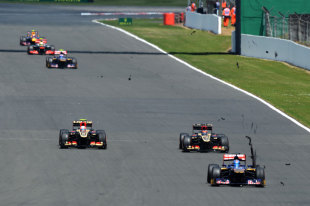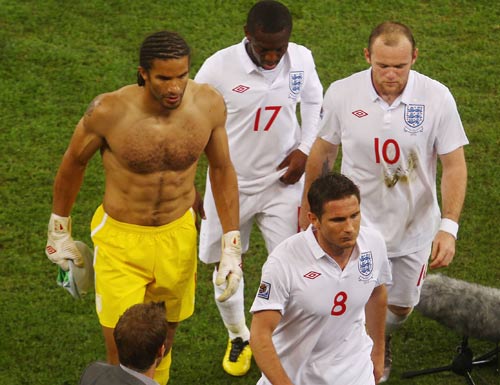
It would be easy to blame Pirelli for the events that unfolded on Sunday afternoon. It was their name on the exploding rubber and it is their reputation that will be hardest hit. But this was a problem of Formula One's own making and its roots, which stretch right the way down the paddock, date back to the start of the season and are a reflection of a much deeper problem in the sport.
Although Pirelli has yet to determine the exact cause of Sunday's blow outs, the feeling in the paddock is that they could have been prevented if the teams had agreed to Pirelli's suggestion to replace the steel belt material in its tyres with Kevlar. The steel belt is the accepted cause of the delaminations seen at previous events and it is also the biggest change since last season when the tyres ran without problems at Silverstone. Pirelli made the switch over the winter in the pursuit of performance and to develop its own technology, but since pre-season testing its engineers had noticed some worrying signs which were later backed up by full-on delaminations at races.
The problem was then how to change the tyres while minimising the negative impact on the brand. Pirelli was reluctant to admit there was a safety concern but in doing so couldn't invoke a clause in the regulations that would have allowed it to make changes without the approval of all the teams. Instead it set about trying to reach a compromise, but in a sport where the teams rarely agree on the time of day it was unlikely they would agree on changing one of the biggest performance factors on the car.
Ferrari, Lotus and Force India all blocked the return to Kevlar belt tyres, arguing they had designed a car to suit the steel belt and therefore it was the other teams' fault if they were struggling for performance. The issue was not helped by Red Bull taking every opportunity to criticise the tyres in the media, which made any potential change look as though it would favour the most successful team. Somewhere along the way, the danger posed by delaminating tyres on track was lost in a wider argument about performance in the paddock.
Pirelli did nothing to ease relationships when it decided to go testing with Ferrari and Mercedes without informing the other teams. The tyre manufacturer insisted the tests were focused on 2014 solutions, but given the situation, it's hard to believe some of the technology was not aimed at making the 2013-spec tyre more robust. Either way, the tyre tests created yet more divisions in the paddock and shifted the sport further away from a solution.
Originally the Kevlar belt rear tyres were going to be introduced in Canada but that was set back to Silverstone to give the teams time to test the new construction during Friday practice in Montreal. But with teams moaning about next to no dry running on the new tyres in Canada, the belt tweak was dropped in favour of a new bonding process that Pirelli believed would stop the delaminations and not affect performance. And so F1 arrived at Silverstone hoping the tyres would take the strain but without much proof that would be the case. Warmer temperatures on Sunday provided another unknown and the result was several catastrophic failures that fortunately did not result in a more serious accident.
Now, and not for the first time, Formula One is reacting after the event when decisions are likely to be rushed and fuelled by emotion. It would be nice to conclude that the sport will at least learn a lesson in cooperation from the build up to this weekend, but once a solution is in place it will likely breed further divisions. It's a sad indictment of a sport when danger appears to be the only unifying factor.
Laurence Edmondson is deputy editor of ESPNF1
© ESPN Sports Media Ltd.
 Laurence Edmondson is deputy editor of ESPNF1 Laurence Edmondson grew up on a Sunday afternoon diet of Ayrton Senna and Nigel Mansell and first stepped in the paddock as a Bridgestone competition finalist in 2005. He worked for ITV-F1 after graduating from university and has been ESPNF1's deputy editor since 2010
Laurence Edmondson is deputy editor of ESPNF1 Laurence Edmondson grew up on a Sunday afternoon diet of Ayrton Senna and Nigel Mansell and first stepped in the paddock as a Bridgestone competition finalist in 2005. He worked for ITV-F1 after graduating from university and has been ESPNF1's deputy editor since 2010

